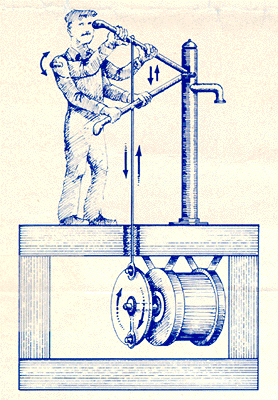

"The original village was founded by Charles Bowdish in his Brookville, Jefferson County, home in the 1920s. It became such an attraction among his friends and neighbors and, finally, to people who drove for miles to see it, that he donated it to Buhl in 1954." (19) [The Buhl Planetarium and Institute of Popular Science, where the Great Miniature Railroad and Village was housed, became part of The Carnegie Science Center, which opened in October 1991.]
Facts & Figures Size of display: 83' x 30' Scale: 1/4" = 1' (or "0"-gauge) Animations: 93 Feet of track: 1,203 Cost of constructing exhibit: $350.000.00 Lionel Trains: 8 Incline: 1 People, non-animated: 2,002+ Trees and shrubs: 274,412 Circus seals balancing a ball on their noses: 1 Farms: 2 Outhouses: 56 Hobo camps: 2 Score of the baseball game (Pittsburgh Crawfords leading the Homestead Grays): 9th inning, 5 to 4 Bridges: 6 Bells: 2 Wells: 4 Elephants in the circus parade: 6 Asian Laps the Blue Comet makes around the exhibit every day: approximately 440 (20)
The "computer is also in charge of all the display animations and sound effects such as train noises from the steel mill, even crickets chirping in the night. It also controls the lighting, turning dawn into dusk on a recurring schedule." (21)
"While the railroad cars provide the focus, the exhibit is really a showcase of the geology, architecture, industry and culture of Western Pennsylvania in the 1920s." (22)